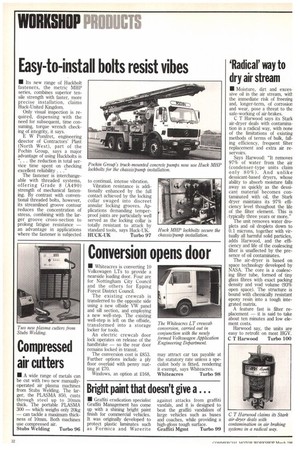'Radical' way to dry air stream
Page 138

If you've noticed an error in this article please click here to report it so we can fix it.
• Moisture, dirt and excessive oil in the air stream, with the immediate risk of freezing and, longer-term, of corrosion and wear, pose a threat to the safe-working of air-brakes.
C T Harwood says its Stark air-dryer deals with contamination in a radical way, with none of the limitations of existing methods of terms of bulk, falling efficiency, frequent filter replacement and extra air reservoirs.
Says Harwood: "It removes 97% of water from the air (condenser-type units claim only 80%). And unlike dessicant-based dryers, whose ability to absorb moisture falls away as quickly as the dessicant material becomes contaminated with oil, the Stark dryer maintains its 97% efficiency level thoughout the life of the filter element. This is 'typically three years or more."
The unit removes water droplets and oil droplets down to 0.1 microns, together with virtually all harmful solid particles, adds Harwood, and the efficiency and life of the coalescing filter is unaffected by the presence of oil contaminates.
The air-dryer is based on space technology developed by NASA. The core is a coalescing filter tube, formed of tiny glass fibres with exact packing density and void volume (93% open space). The structure is bound with chemically resistant epoxy resin into a tough integrated matrix.
A feature fast is filter replacement — it is said to take about ten minutes and low element costs.
Harwood say, the units are easy to retrofit on most HGV. C T Harwood Turbo 100
















































































































































